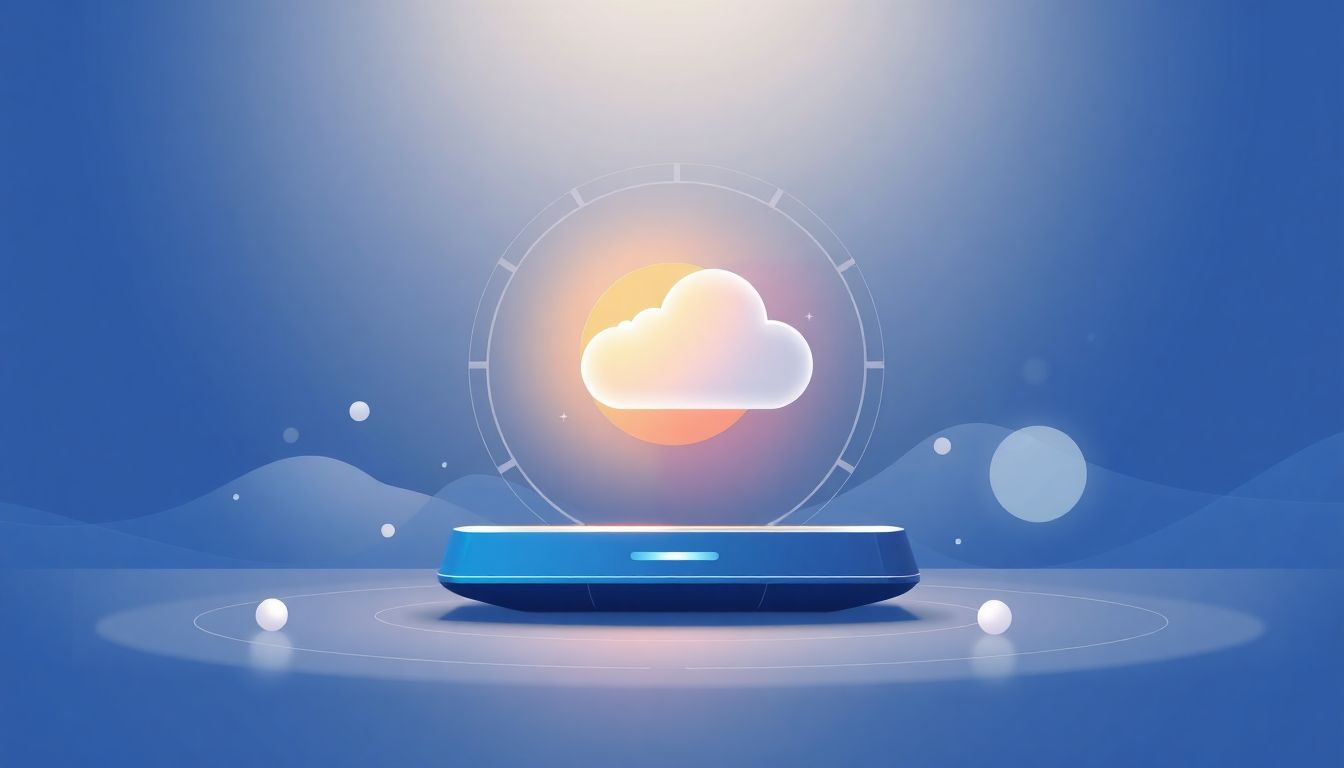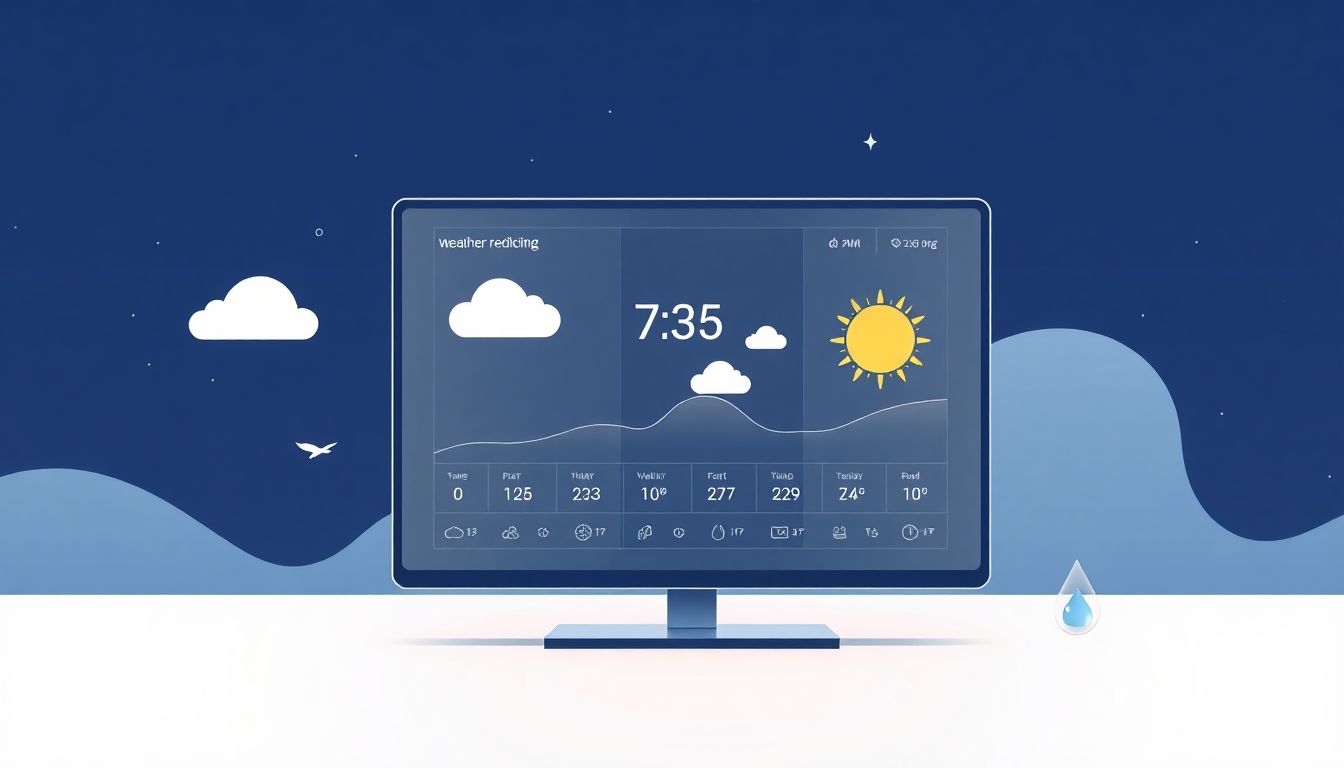Hey there! You’ve probably noticed that predicting the weather isn’t as simple as it used to be—especially with so many unpredictable days. That’s where AI weather prediction software steps in to make a difference. If you stick around, I’ll show you how these tools are changing the game, making forecasts quicker and more reliable.
By the end, you’ll see how AI can help you stay ahead of the weather and choose the right software for your needs. And don’t worry—I’ll give you a sneak peek of what’s coming next, so you know what to expect.
Key Takeaways
Key Takeaways
- AI weather software in 2025 forecasts faster and more accurately by analyzing huge data sets in seconds, helping users respond quickly to severe weather. It provides detailed, hyper-local forecasts up to 15 days ahead.
- Popular tools like GraphCast and Climavision use AI to deliver reliable, up-to-date predictions, often outperforming traditional models and reducing reliance on huge computing power.
- AI improves forecast precision by combining multiple models, updating data frequently, and offering regional details as fine as 3 km, making predictions more useful for businesses and emergencies.
- Future trends include higher resolution, faster updates every few minutes, better data sources, and including climate change insights, all while becoming more energy-efficient.
- Challenges include data quality issues, difficulty forecasting rare events, model complexity, and the need for technical know-how, which can limit AI’s full potential in weather prediction.
- Businesses can implement AI weather tools by defining their needs, assessing data access, starting small, training staff, and continually refining forecasts based on performance feedback.
- Many industries, like farming, aviation, and emergency services, already use AI-based weather forecasts to improve decision-making, save resources, and protect communities.
- Overall, AI weather prediction tools in 2025 are transforming how we understand and prepare for weather, making forecasts quicker, more detailed, and more reliable than ever before.

What Is AI Weather Prediction Software in 2025?
AI weather prediction software in 2025 is a system that uses artificial intelligence and machine learning techniques to forecast weather conditions more quickly and accurately than traditional models. It processes huge amounts of data from satellites, radar, sensors, and historical records to spot patterns and predict upcoming weather events. For example, Google’s GraphCast can forecast weather up to 10 days ahead in less than a minute on a standard desktop, outperforming many supercomputer-based models.
This software not only provides everyday forecasts but also excels at predicting severe weather like hurricanes, heatwaves, or flash floods, with updates happening every hour or even every few minutes. By leveraging AI, these tools can deliver hyper-local, precise forecasts that help individuals, businesses, and governments respond faster to weather threats. With the ability to analyze over 1.5 billion data points daily, AI-driven systems are changing the way we understand and prepare for weather changes.
Top AI Weather Prediction Tools and Platforms in 2025
Some of the most notable AI weather prediction platforms in 2025 include Google DeepMind’s GraphCast, which provides quick, detailed forecasts for up to 10 days out, and Climavision’s Horizon AI Global, which delivers forecasts up to 15 days, including hurricane and blizzard detection, with hourly updates.
Another key player is GenCast, which surpasses traditional models in accuracy 97% of the time for precipitation and wind forecasting by combining AI with numerical weather prediction. Many platforms also utilize high-resolution limited-area models that provide regional forecasts at resolutions as fine as 3 km, making weather predictions more detailed for specific locations.
These tools process data from satellite imagery, IoT sensors, and radar, and they reduce computing resource demands up to 90% compared to old physics-based systems. Many are available via subscription or platform integration, making high-quality AI weather forecasting accessible for a range of users—from meteorologists to farmers and event planners.
How AI Improves Weather Forecasting Accuracy and Speed
AI makes weather forecasts faster mainly because it can analyze massive datasets in seconds, unlike traditional models which often take hours on supercomputers. For instance, GraphCast can generate a reliable forecast in less than a minute, enabling real-time updates for severe weather alerts. This speed is critical when conditions change rapidly, like during thunderstorms or tornadoes.
Accuracy improves because AI models learn from historical data and continuously refine their predictions, often outperforming classical physics-based models in predicting extreme events. AI’s ability to blend outputs from hundreds of models—for example, Horizon AI’s blending of over 100 models—reduces bias and error, resulting in more dependable forecasts. Additionally, AI’s resolution at regional scales (around 3 km) allows for very detailed, localized predictions, which is a game changer for decision-makers.
Plus, AI models update forecast information multiple times a day, or even hourly, ensuring the latest data informs predictions. This rapid processing and high precision save lives, protect property, and help industries plan better—whether it’s scheduling flights or managing agricultural watering schedules.

How AI Weather Prediction Software Will Evolve in the Coming Years
Looking ahead, AI weather prediction tools are expected to become even smarter and more precise by 2026 and beyond.
One trend is increasing resolution—models will refine their regional forecasts to resolutions below 1 km, helping pinpoint local weather conditions with greater accuracy.
We can also expect faster updates, with some platforms providing real-time hyper-local forecasts every 5 to 10 minutes, which is crucial during fast-changing events like storms.
Another advancement will be better integration of diverse data sources, such as crowdsourced weather reports and IoT devices deployed in smart cities, to enhance prediction accuracy.
AI models are likely to incorporate climate change projections, helping us understand future weather patterns and plan accordingly.
Overall, AI systems will become more energy-efficient, requiring less computational power while delivering predictions that are more detailed and reliable.
Common Challenges and Limitations of AI Weather Prediction Software in 2025
Despite all the progress, AI weather tools still face hurdles worth noting.
One issue is data quality—garbage in, garbage out; if sources like satellites or sensors malfunction, predictions might falter.
Models can also struggle with rare or unprecedented events that haven’t been seen before, since they rely on historical data for learning.
Another challenge is interpretability—sometimes AI models are like black boxes, making it hard for users to understand how forecasts are generated.
Computational costs, although reduced, can still be significant for ultra-high-resolution models covering vast regions.
Finally, integrating AI with existing traditional forecasting methods often requires technical expertise, posing a barrier for some users or organizations unfamiliar with AI.
Steps to Implement AI Weather Prediction Software in Your Business
- Identify your forecast needs: Are you focusing on local weather alerts, long-term planning, or disaster risk management? Knowing your goals helps pick the right tools.
- Research available platforms: Look into AI weather providers like Google DeepMind’s GraphCast or Climavision to see which one fits your sector.
- Assess data infrastructure: Do you have access to reliable sensors, satellite feeds, or weather stations? These are vital for AI models to deliver accurate forecasts.
- Start small: Test a pilot program with limited scope—perhaps for a specific region or event—to see how the AI system performs in your context.
- Train your team: Ensure your staff understands how to interpret AI forecasts and integrate them into decision-making processes.
- Monitor and refine: Collect performance data, refine your inputs, and adjust settings to improve accuracy over time.
Real-World Examples of AI Weather Use Cases in 2025
Many industries are already reaping benefits from AI-driven weather predictions.
Farmers use hyper-local forecasts from platforms like Climavision to decide when to water or harvest, minimizing crop loss.
Airlines rely on fast AI models like GraphCast to plan flights around severe weather, saving time and fuel.
Emergency services utilize AI alerts to prepare for hurricanes or flash floods, reducing risk for communities.
Event organizers, outdoor venues, and sports leagues check detailed weather updates to keep attendees safe and plan better.
In each case, faster, more detailed predictions turn weather data into practical, actionable insights.
Conclusion
AI weather prediction software in 2025 is changing the way we deal with weather everywhere.
These tools are faster, more precise, and more adaptable than ever, helping users make smarter decisions every day.
While challenges remain, ongoing innovations promise even better forecasts in the near future.
If you want to stay ahead, exploring AI-powered weather tools now can give your business a real edge—especially when every second counts during severe weather events.
FAQs
AI weather prediction software uses machine learning algorithms to analyze data and generate forecasts, increasing accuracy and speed compared to traditional models.
AI enhances forecasting by processing vast datasets quickly, detecting patterns more effectively, and providing updates with higher precision and faster turnaround times.
Look at the platform’s accuracy, ease of integration, data sources supported, user interface, and cost. Selecting software with reliable forecasts is key for effective decision-making.
Expect ongoing improvements in forecast accuracy, integration of satellite data, real-time updates, and increased use of AI-driven models for local and global weather predictions.